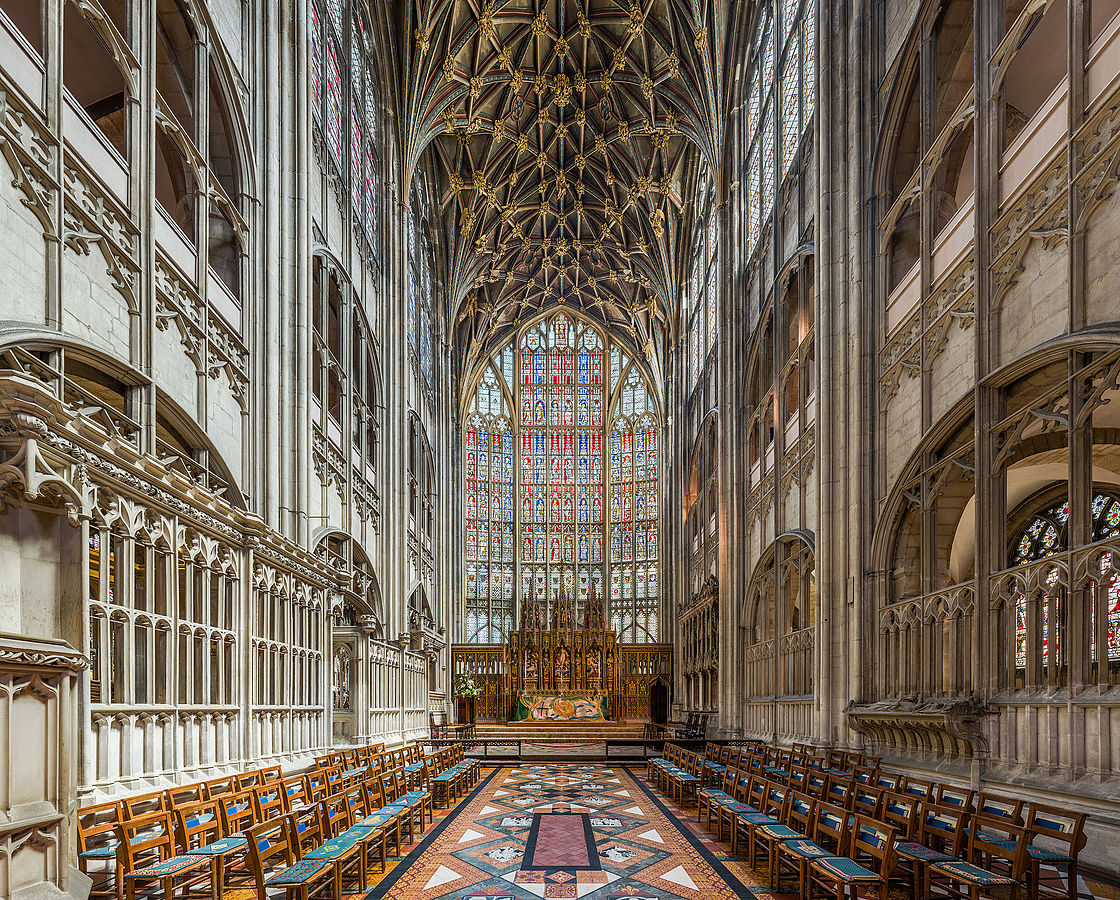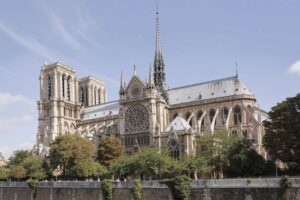The Gothic cathedral stood like a stone mountain amid the dark alleyways of the Middle Ages, its spires reaching for the sky. But inside these huge buildings, a peaceful, almost magical revolution was going on. This was not a revolution of raw force, but of light—a deep change that made a building into a place for the holy. For the builders and patrons of the Gothic era, light was more than just a pretty thing; it was a physical sign of God’s presence and an art form that would change how we think about sacred space forever.
The Philosophical Foundations: A Divine Illumination
The conceptual basis for this fixation on light, or lux nova (new light), was profoundly entrenched in mediaeval theology. Theologians, influenced by authors such as Saint Augustine and the Pseudo-Dionysius the Areopagite, posited that light is a direct emanation from God, the supreme source of truth, beauty, and wisdom. Abbot Suger of the Basilica of Saint-Denis was the most passionate and clear supporter of this idea.
When Suger started his huge renovation project in the 12th century, he didn’t just want to make the church bigger; he wanted to make a spiritual masterpiece that would take the worshipper’s soul to a higher level. He imagined a church with “wonderful and uninterrupted light” and “circular string of chapels” with bright, coloured windows. Suger wanted to make a real connection between the earthly and the divine by replacing solid walls with glass. This inspired other architects to adopt his breakthrough idea.
Suger’s ideas were so powerful that they led to a whole new type of architecture. He thought that the beauty of a church, especially its light, might take a person from the physical world to a spiritual one.
The “incarnation of light” was a big idea, with the sun’s light standing in for Christ’s divine light. The church was set up so that the altar and choir were at the east end and the entry was at the west end. This was meant to pull people’s attention and minds to the choir’s lightness, which was meant to be a symbolic voyage to paradise. This religious foundation turned architectural design from a strictly structural task into a holy art form.
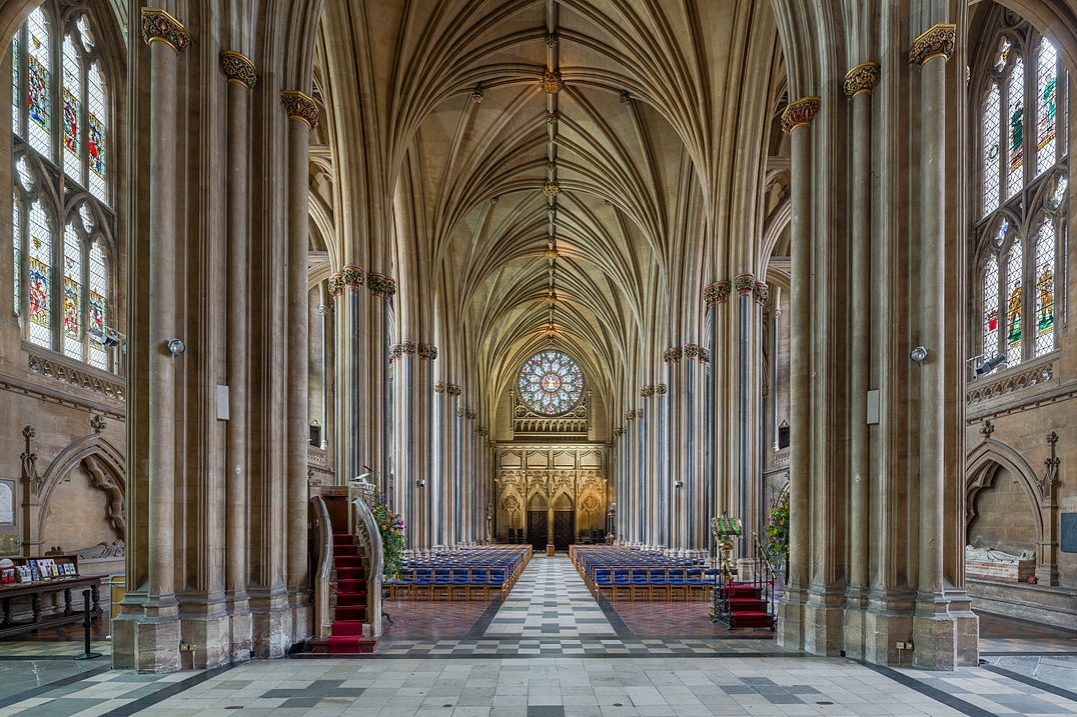 The nave of Bristol Cathedral looking west towards the entrance. Credit: David Iliff
The nave of Bristol Cathedral looking west towards the entrance. Credit: David Iliff
New Ways of Building to Follow the Light
A number of dramatic changes to the way buildings are built were needed to reach this new degree of brightness. The flying buttress was the most important thing that happened. Romanesque churches had massive, hefty walls and narrow, fortress-like windows before the Gothic period.
The Romanesque design had round arches and barrel vaults that pushed out a lot of pressure, so the walls had to be strong enough to keep them from falling down. But flying buttresses changed the game. These exterior, half-arched supports took the outward push of the high vaulted ceilings and sent it down to the ground, away from the main walls.
By doing this, they freed the walls from having to hold up the roof, which let architects make them thinner, higher, and, most crucially, put big windows in them. This simple answer to a difficult engineering challenge opened up a whole new universe of possibilities, making it possible to build the airy, light-filled chambers that are typical of Gothic cathedrals.
The ribbed vault and the pointed arch were two other important new ideas. The pointed arch was a better way to hold up weight than the semicircular Romanesque arch because it directed weight more straight down.
Ribbed vaults employed a skeletal framework of stone ribs to hold up the ceiling. They sent the weight to certain spots on the piers and columns below. This structural sophistication made the walls even thinner and made even more room for windows.
These technologies worked together to make cathedrals reach amazing heights, creating an awe-inspiring sense of verticality that drew the eye and the spirit skyward. The four-part ribbed vaults were very important for erecting something like the Chartres and Amiens Cathedrals, which were much taller than anything built in the Romanesque era.
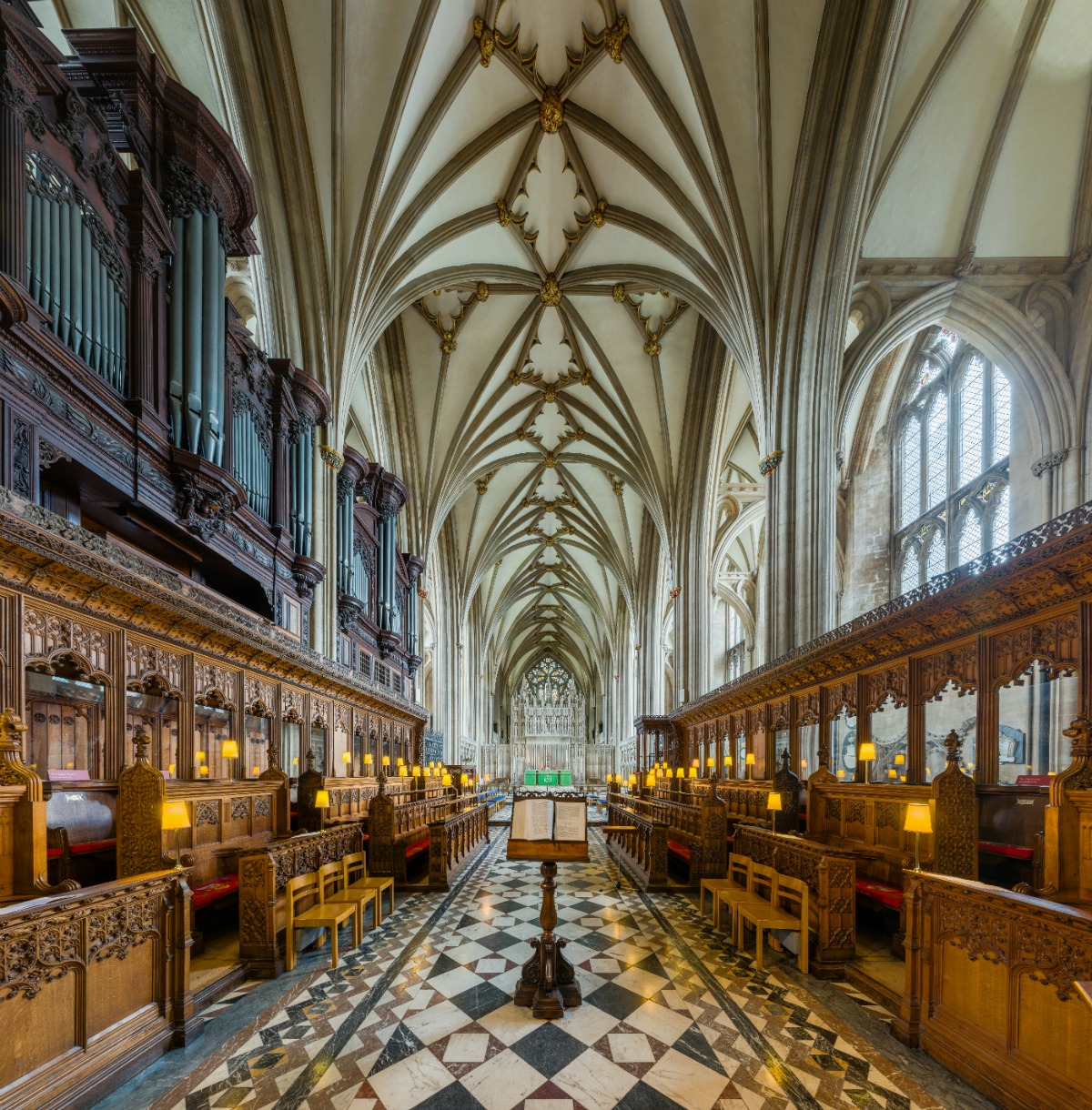 Vaulting of the choir. Credit: David Iliff
Vaulting of the choir. Credit: David Iliff
The Revolution in Stained Glass
The stained-glass window was the best part of this architectural symphony. These weren’t just decorations; they were the “Poor Man’s Bible,” a way for a mostly illiterate congregation to learn about the faith. Each window recounted a tale, such the life of Christ, the death of a saint, or a lesson from the Old Testament. When sunlight came through the coloured glass, it turned into a kaleidoscope of beautiful colours that gave the inside a wonderful, otherworldly glow.
The deep blues, fiery reds, and bright yellows were not picked at random; they all have special connotations. Blue, which is typically linked to the Virgin Mary, made people think of the sky, and red stood for Christ’s blood and the deaths of martyrs. The light and colour changed all day long, making the area feel alive and breathing. The air itself was full of spiritual meaning.
The art in these windows was just as complicated as the building itself. Artists made detailed, mosaic-like scenes out of microscopic pieces of glass that were bound together by lead strips. The lead lines, which are called cames, became an important feature of the design since they helped to define shapes and keep colours from mixing.
Later methods, like silver stain, let you use a larger spectrum of colours on one pane of glass, from pale lemon to rich gold. The windows were meticulously made so that people could see them from a distance. The lead lines and glass panels worked together to tell a story that kept the viewer’s attention.
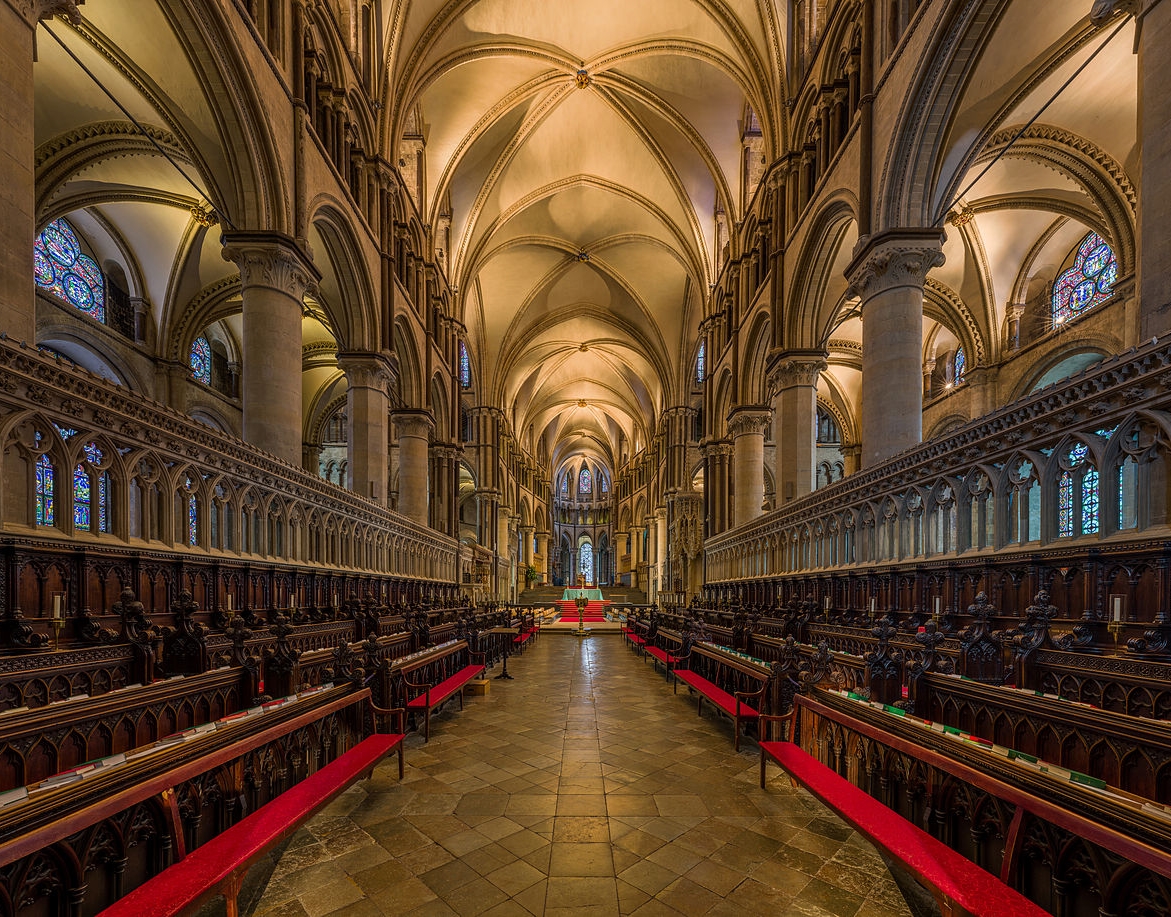 Canterbury Cathedral – 12th-century choir. Credit: David Iliff
Canterbury Cathedral – 12th-century choir. Credit: David Iliff
Case Study: Chartres Cathedral
Chartres Cathedral is one of the most beautiful examples of this art style. It has one of the most complete collections of mediaeval stained glass in the world. The cathedral’s famous ‘Chartres Blue’ is a cobalt masterpiece that gives the structure a sombre, deeply meditative feel that sets it apart from later Gothic churches with brighter interiors.
The huge rose windows, like the beautiful Last Judgement window on the west façade, were focal points that drew people in and told a story about salvation and divine order. The art and architecture worked together perfectly to help the observer on their spiritual journey.
The three big rose windows and the 167 small lancet windows at Chartres tell stories from the Bible and the lives of the saints. For instance, the rose window in the south transept is dedicated to Christ. The central lancet below it shows the Virgin with Christ, with the evangelists on the shoulders of prophets on either side. This visual lecture, which anybody could see, taught the believers about their history and their role in God’s purpose.
The vast amount and quality of the stained glass at Chartres show how this art form became the main way to express oneself artistically and spiritually during the Gothic period.
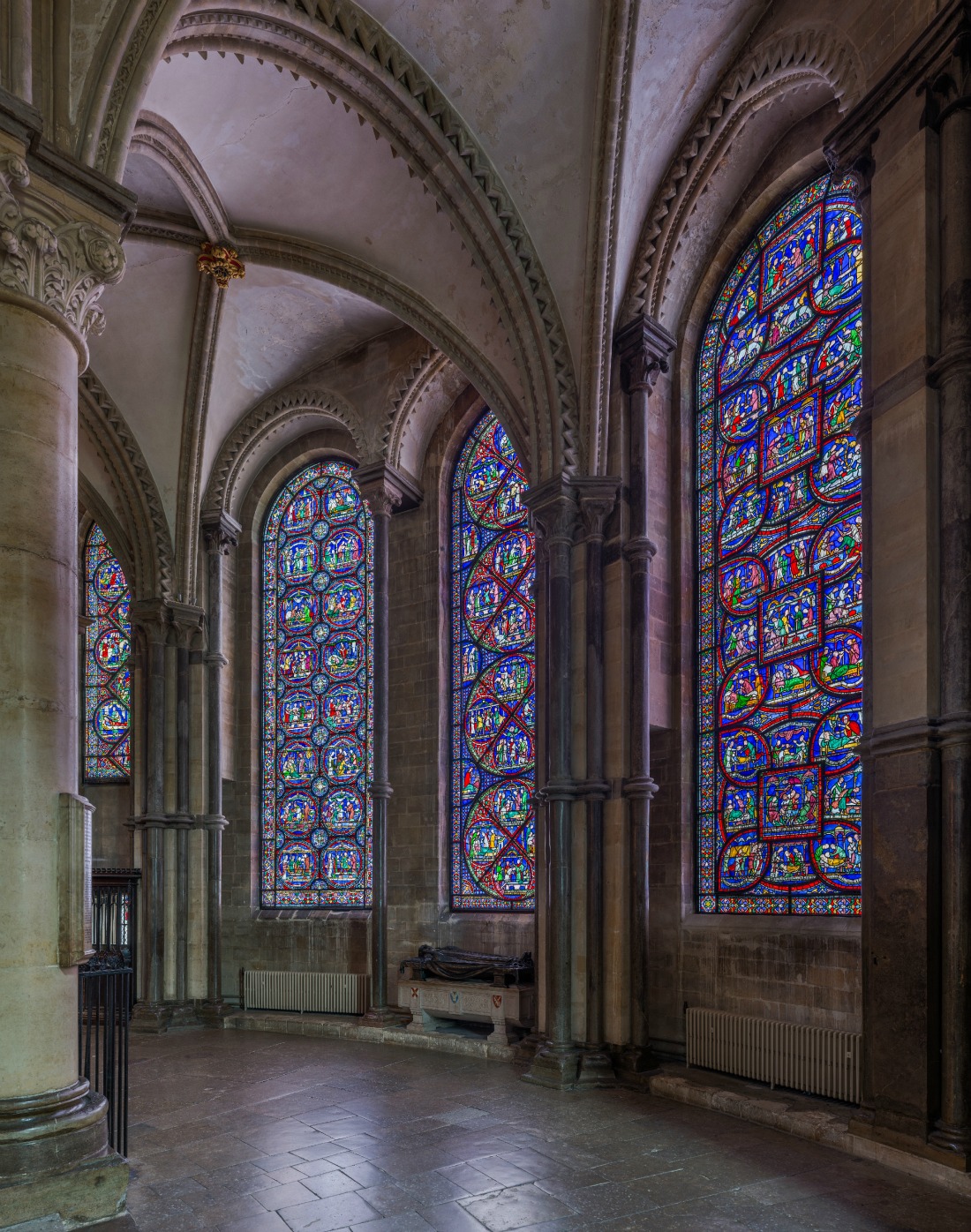
Final Thoughts
Ultimately, the function of light in mediaeval cathedrals was to surpass the corporeal and engage the spiritual. It was a deliberate design choice that turned stone and glass into a place where people could feel God’s presence. These bright buildings were more than just places to worship; they were prayers made of stone and light, and they showed that a building could, in every meaning of the word, sing. The Gothic cathedral became a strong and lasting emblem of human creativity and spiritual growth by using light in new ways.
For more blogs like this CLICK HERE!
Reference
Light from Light: The use of natural light in medieval churches

